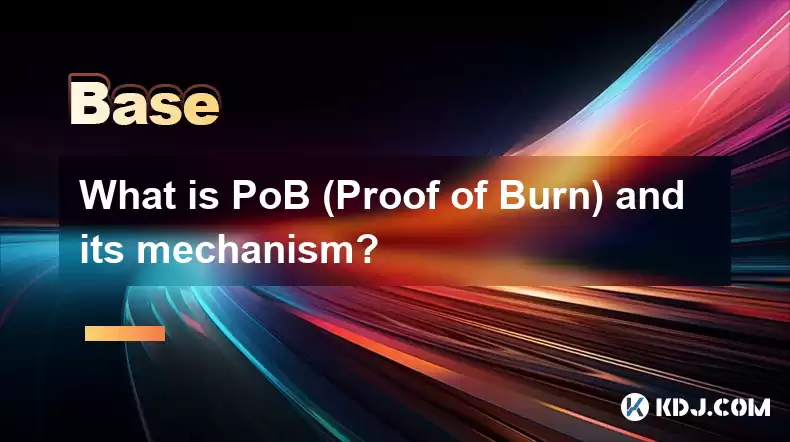-
 Bitcoin
Bitcoin $115100
1.27% -
 Ethereum
Ethereum $3675
2.71% -
 XRP
XRP $2.995
1.45% -
 Tether USDt
Tether USDt $1.000
0.02% -
 BNB
BNB $769.8
2.64% -
 Solana
Solana $168.0
3.25% -
 USDC
USDC $0.9999
-0.01% -
 TRON
TRON $0.3371
1.48% -
 Dogecoin
Dogecoin $0.2051
3.36% -
 Cardano
Cardano $0.7394
2.30% -
 Hyperliquid
Hyperliquid $38.15
0.42% -
 Stellar
Stellar $0.3966
-0.36% -
 Sui
Sui $3.486
2.93% -
 Chainlink
Chainlink $16.72
2.52% -
 Bitcoin Cash
Bitcoin Cash $568.0
4.36% -
 Hedera
Hedera $0.2440
2.59% -
 Ethena USDe
Ethena USDe $1.001
0.04% -
 Avalanche
Avalanche $22.16
2.06% -
 Litecoin
Litecoin $119.1
-0.73% -
 UNUS SED LEO
UNUS SED LEO $8.991
0.04% -
 Toncoin
Toncoin $3.232
-0.39% -
 Shiba Inu
Shiba Inu $0.00001233
2.82% -
 Uniswap
Uniswap $9.717
2.53% -
 Polkadot
Polkadot $3.664
1.85% -
 Dai
Dai $1.000
0.01% -
 Monero
Monero $281.2
-3.89% -
 Bitget Token
Bitget Token $4.350
1.55% -
 Cronos
Cronos $0.1428
5.07% -
 Pepe
Pepe $0.00001050
3.68% -
 Aave
Aave $262.3
3.54%
What is PoB (Proof of Burn) and its mechanism?
PoB is a consensus mechanism where miners burn coins to gain mining rights, offering energy efficiency and fairness but facing challenges like initial cost and economic impact.
Apr 07, 2025 at 04:56 pm

What is PoB (Proof of Burn) and its mechanism?
In the world of cryptocurrencies, various consensus mechanisms are used to validate transactions and secure the network. One such mechanism is Proof of Burn (PoB), which is an alternative to more commonly known methods like Proof of Work (PoW) and Proof of Stake (PoS). PoB is designed to be more energy-efficient and potentially more equitable than other systems. This article will delve into what PoB is, how it works, and its advantages and challenges.
Understanding Proof of Burn
Proof of Burn is a consensus mechanism where miners "burn" or permanently destroy a portion of their cryptocurrency to gain the right to write new blocks to the blockchain. The idea behind PoB is to simulate the cost of mining in PoW without the need for extensive computational power. By burning coins, miners demonstrate their commitment to the network, and in return, they receive the opportunity to mine new blocks.
The Mechanism of Proof of Burn
The process of PoB involves several key steps:
- Burning Coins: Miners send their coins to an unspendable address, effectively removing them from circulation. This act of burning is recorded on the blockchain.
- Earning Mining Rights: The amount of coins burned determines the miner's chance of being selected to mine a new block. The more coins a miner burns, the higher their probability of being chosen.
- Mining New Blocks: Once selected, the miner can add new transactions to the blockchain and earn the associated rewards, typically in the form of newly minted coins.
This mechanism aims to create a fair and energy-efficient way to secure the network, as it does not require the same level of computational resources as PoW.
Advantages of Proof of Burn
PoB offers several potential benefits that make it an attractive alternative to other consensus mechanisms:
- Energy Efficiency: Unlike PoW, which requires significant energy to solve complex mathematical problems, PoB does not consume additional energy beyond the initial transaction to burn coins.
- Fairness: PoB can be seen as more democratic, as anyone with coins to burn can participate, regardless of their access to specialized mining hardware.
- Network Security: By requiring miners to burn coins, PoB incentivizes long-term commitment to the network, potentially enhancing its security.
Challenges and Criticisms of Proof of Burn
Despite its advantages, PoB faces several challenges and criticisms:
- Initial Cost: The need to burn coins can be a significant barrier to entry, especially for new participants who may not have enough coins to burn.
- Economic Impact: Burning coins reduces the total supply, which can lead to deflationary pressures and affect the overall economy of the cryptocurrency.
- Complexity: The process of burning coins and managing the associated probabilities can be more complex for users to understand and implement compared to other mechanisms.
Examples of Proof of Burn in Practice
Several cryptocurrencies have implemented or experimented with PoB. One notable example is Slimcoin, which uses a hybrid of PoB and PoW. In Slimcoin, miners burn coins to gain the right to mine new blocks, and the system adjusts the difficulty based on the amount of coins burned.
Another example is Counterparty, which uses PoB to issue new tokens. Users burn Bitcoin to create new Counterparty tokens, demonstrating the versatility of PoB in different applications.
How to Participate in Proof of Burn
Participating in a PoB system involves several steps:
- Choose a PoB Cryptocurrency: Identify a cryptocurrency that uses PoB, such as Slimcoin or Counterparty.
- Acquire Coins: Purchase or earn the necessary coins to burn.
- Burn Coins: Send the coins to the designated unspendable address. This process varies depending on the specific cryptocurrency but generally involves a standard transaction to a specific address.
- Monitor and Mine: After burning coins, monitor the network to see if you are selected to mine a new block. If selected, you can add new transactions and earn rewards.
Frequently Asked Questions
Q: Can burned coins ever be recovered?
A: No, once coins are sent to an unspendable address, they are permanently removed from circulation and cannot be recovered.
Q: How does PoB compare to Proof of Stake in terms of energy consumption?
A: Both PoB and PoS are more energy-efficient than PoW. PoB does not require additional energy beyond the initial transaction to burn coins, while PoS relies on the energy needed to validate transactions and maintain the network.
Q: Is PoB suitable for all types of cryptocurrencies?
A: PoB may not be suitable for all cryptocurrencies, especially those with a small initial supply or those that aim to avoid deflationary pressures. It is best suited for cryptocurrencies that can handle the economic impact of burning coins and have a clear strategy for managing the supply.
Q: Can PoB be combined with other consensus mechanisms?
A: Yes, PoB can be combined with other mechanisms, as seen in Slimcoin, which uses a hybrid of PoB and PoW. This combination can leverage the strengths of different systems to enhance network security and efficiency.
Disclaimer:info@kdj.com
The information provided is not trading advice. kdj.com does not assume any responsibility for any investments made based on the information provided in this article. Cryptocurrencies are highly volatile and it is highly recommended that you invest with caution after thorough research!
If you believe that the content used on this website infringes your copyright, please contact us immediately (info@kdj.com) and we will delete it promptly.
- Avalanche vs. Ruvi AI: Daily Sales Tell a Story of Crypto Disruption
- 2025-08-07 06:29:35
- DeSoc: The Crypto to Buy Now for a Decentralized Future (and Maybe 43x Gains!)
- 2025-08-07 06:50:16
- Arctic Pablo Coin: Riding the Meme Coin Wave with a Deflationary Twist
- 2025-08-07 07:18:13
- XRP Price Skyrocket? Decoding the Cryptocurrency's Next Move
- 2025-08-07 07:31:50
- Meme Coins in August 2025: Riding the Rally Wave
- 2025-08-07 06:56:08
- Big Whales, Altcoins, and Heavy Transactions: What's Moving the Crypto Market?
- 2025-08-07 06:29:35
Related knowledge

What is the difference between CeFi and DeFi?
Jul 22,2025 at 12:28am
Understanding CeFi and DeFiIn the world of cryptocurrency, CeFi (Centralized Finance) and DeFi (Decentralized Finance) represent two distinct financia...

How to qualify for potential crypto airdrops?
Jul 23,2025 at 06:49am
Understanding What Crypto Airdrops AreCrypto airdrops refer to the distribution of free tokens or coins to a large number of wallet addresses, often u...

What is a crypto "airdrop farmer"?
Jul 24,2025 at 10:22pm
Understanding the Role of a Crypto 'Airdrop Farmer'A crypto 'airdrop farmer' refers to an individual who actively participates in cryptocurrency airdr...

What is the difference between a sidechain and a Layer 2?
Jul 20,2025 at 11:35pm
Understanding the Concept of SidechainsA sidechain is a separate blockchain that runs parallel to the main blockchain, typically the mainnet of a cryp...

What is the Inter-Blockchain Communication Protocol (IBC)?
Jul 19,2025 at 10:43am
Understanding the Inter-Blockchain Communication Protocol (IBC)The Inter-Blockchain Communication Protocol (IBC) is a cross-chain communication protoc...

How does sharding improve scalability?
Jul 20,2025 at 01:21am
Understanding Sharding in BlockchainSharding is a database partitioning technique that is increasingly being adopted in blockchain technology to enhan...

What is the difference between CeFi and DeFi?
Jul 22,2025 at 12:28am
Understanding CeFi and DeFiIn the world of cryptocurrency, CeFi (Centralized Finance) and DeFi (Decentralized Finance) represent two distinct financia...

How to qualify for potential crypto airdrops?
Jul 23,2025 at 06:49am
Understanding What Crypto Airdrops AreCrypto airdrops refer to the distribution of free tokens or coins to a large number of wallet addresses, often u...

What is a crypto "airdrop farmer"?
Jul 24,2025 at 10:22pm
Understanding the Role of a Crypto 'Airdrop Farmer'A crypto 'airdrop farmer' refers to an individual who actively participates in cryptocurrency airdr...

What is the difference between a sidechain and a Layer 2?
Jul 20,2025 at 11:35pm
Understanding the Concept of SidechainsA sidechain is a separate blockchain that runs parallel to the main blockchain, typically the mainnet of a cryp...

What is the Inter-Blockchain Communication Protocol (IBC)?
Jul 19,2025 at 10:43am
Understanding the Inter-Blockchain Communication Protocol (IBC)The Inter-Blockchain Communication Protocol (IBC) is a cross-chain communication protoc...

How does sharding improve scalability?
Jul 20,2025 at 01:21am
Understanding Sharding in BlockchainSharding is a database partitioning technique that is increasingly being adopted in blockchain technology to enhan...
See all articles

























































































